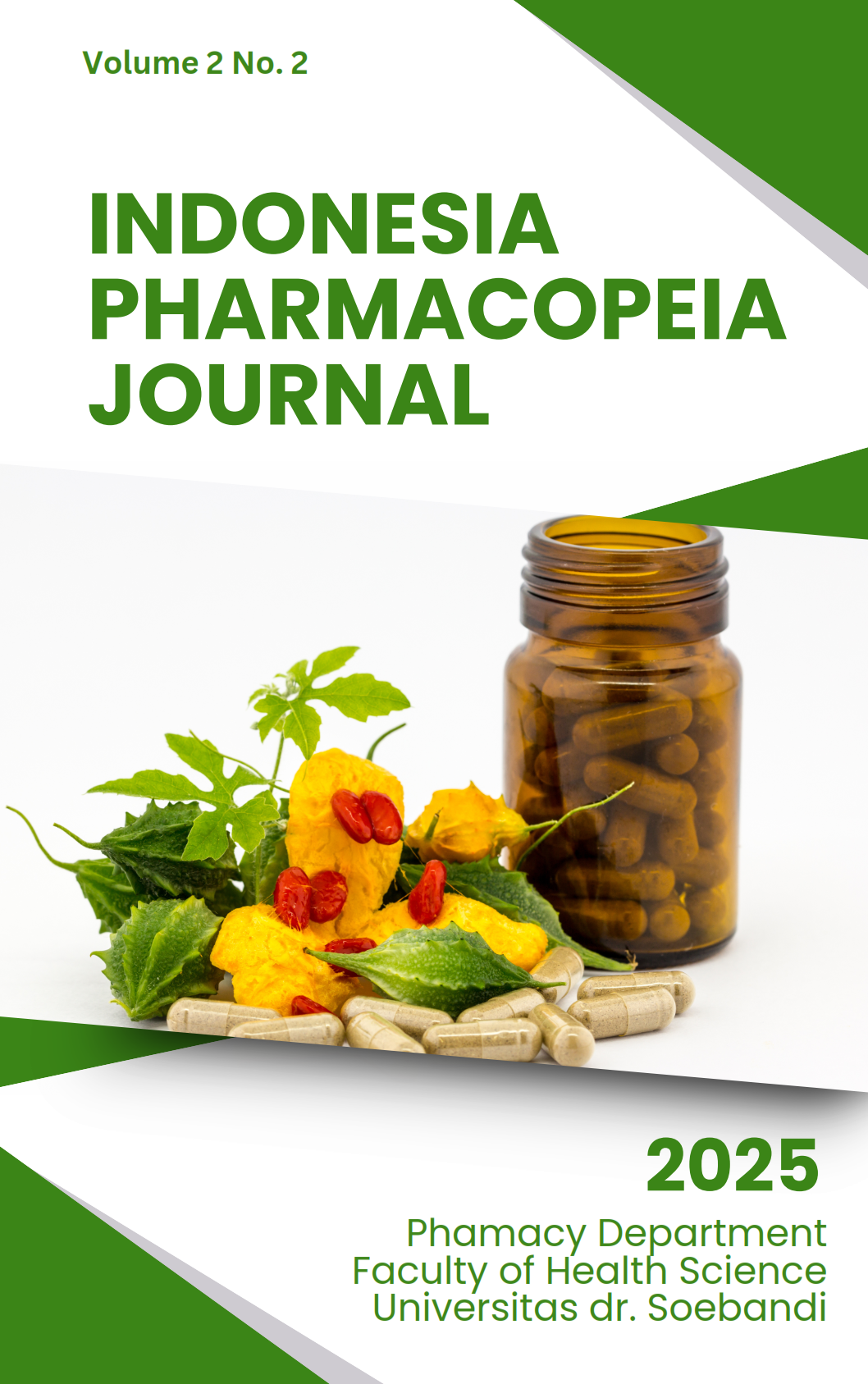Literature Review: Pharmacological Activity and Characteristics of Red Onion (Allium cepa L.)
DOI:
https://doi.org/10.36858/ipj.v2i2.54Keywords:
onion, pharmacology, characteristics, standardization, Allium cepaAbstract
Shallot skin (Allium cepa L.) is a household waste that is still rarely utilized, even though it contains secondary metabolites such as flavonoids, anthocyanins, saponins, tannins, and other phenolic compounds that have pharmacological potential, especially as antioxidants and antibacterials. This study evaluates shallot skin's specific and non-specific pharmacognosy parameters through literature studies. Specific parameters include organoleptic, microscopic tests, and identifying active compound content using TLC, while non-specific parameters include water, ash, and contamination. The literature search method was done through Google Scholar, PubMed, and ScienceDirect, using the criteria of articles from 2015 to 2025. The study results indicate that flavonoid content, especially quercetin, contributes significantly to the antioxidant and anti-inflammatory effects. Shallot skin also shows effective antibacterial and antimicrobial activity against pathogenic strains such as Staphylococcus aureus, Escherichia coli, and Salmonella typhi. In addition, the mechanism of inhibition of α-amylase and α-glucosidase enzymes shows potential as an antidiabetic agent. Anticancer activity is supported by the active compounds' ability to induce apoptosis and inhibit cancer cell proliferation. With its abundant bioactive compound profile, shallot skin has the potential to be developed.
References
Badriyah, L., Aminatul Farihah, D., & Farmasi Kusuma Husada Purwokerto, A. (2022). Analysis of shallot (Allium cepa L.) peel extraction using the maceration method. In J. Synthesis Submitted: May 15 (Vol. 2022, Issue 1).
Hikmah, S. I., & Anggarani, M. A. (2021). Bioactive Compounds and Antioxidant Activities of Nganjuk Shallot (Allium cepa L.). In UNESA Journal of Chemistry (Vol. 10, Issue 3).
Lusi, A., Setiani, B. L., Sari, L., & Indriani, J. (2017). Determination of Flavonoid Content of 70% Ethanol Extract of Shallot Skin (Allium cepa L.) Using Maceration and Mae (Microwave Assisted Extraction) Methods (Vol. 7, Issue 2).
Narsa, A. C., Salman, A. A., & Prabowo, W. C. (2022). Identification of Secondary Metabolites and Pharmacognosy Profile of Shallot Peel (Allium cepa L.) as a Renewable Pharmaceutical Raw Material. Journal of Science and Health, 4(6), 645–653. https://doi.org/10.25026/jsk.v4i6.1551
Rahayu, S., Kurniasih, N., Vina, D., Kimia, A. J., Sains, F., Teknologi, D., Gunung, S., Bandung, D., & Nasution, J. A. H. (2015). Extraction and Identification of Flavonoid Compounds from Shallot Peel Waste as Natural Antioxidants (Vol. 2, Issue 1).
Sari Pertala, M., Studi Pharmaceutical, P., Ilmu Kesehatan, F., & Malahayati, U. (2022). Identification of Secondary Metabolite Compounds Using a Gc-MS Instrument on Shallot (Allium cepa L.) Peel Extract Using Ethyl Acetate and N-Hexane Solvents. In Journal of Medical and Health Sciences (Vol. 9, Issue 4). http://ejurnalmalahayati.ac.id/index.php/kesehatan
Soemarie, Y. B. (2016). Anti-inflammatory Activity Test of Shallot (Allium cepa L.) Peel Quercetin in Male White Mice (Mus musculus). In Ibnu Sina Scientific Journal (Vol. 1, Issue 2).
Sulthon Aziz, Y., Ardyanto, M., Ikhza, M., Sunan, A., & Ponorogo, G. (2019). Standardization of Non-Specific Parameters of Turmeric Rhizome (Curcumae Domestica Rhizome) and Curcuma xanthorrhiza Roxb. (Curcuma xanthorrhiza Roxb.) in Ponorogo Regency. In Jurnal Delima Harapan (Vol. 6, Issue 2).
Downloads
Published
How to Cite
Issue
Section
License
Copyright (c) 2025 Arista Wahyuningsih, Shinta Mayasari, Iski Weni Pebriarti, Sepbrilla Ananda Kusriadi

This work is licensed under a Creative Commons Attribution-ShareAlike 4.0 International License.




